There are very few castles in Europe are situated in such a central location as this amazing building in Milan.
In this post, we’ll take a closer look at some interesting Castello Sforzesco facts, a must-see attraction in the second-largest city in Italy.
1. It’s located in the historical heart of Milan
The Castello Sforzesco, also sometimes referred to as the “Sforza Castle,” is one of the most fascinating landmarks in the city of Milan. It’s located right in the heart of the city as it was built on the location of the ancient city walls.
Milan Cathedral is just a few hundred meters away to the southeast of the castle and other great landmarks in the city such as the Pinacoteca di Brera, the Santa Maria delle Grazie church (which features “The Last Supper” painting by Leonardo da Vinci,) and the Scala Theater are just nearby as well.
On the opposite end, the castle is adjoined by the Parco Sempione, the largest public park in central Milan with an area of 38.6 hectares (95 acres) which was established in the year 1888.
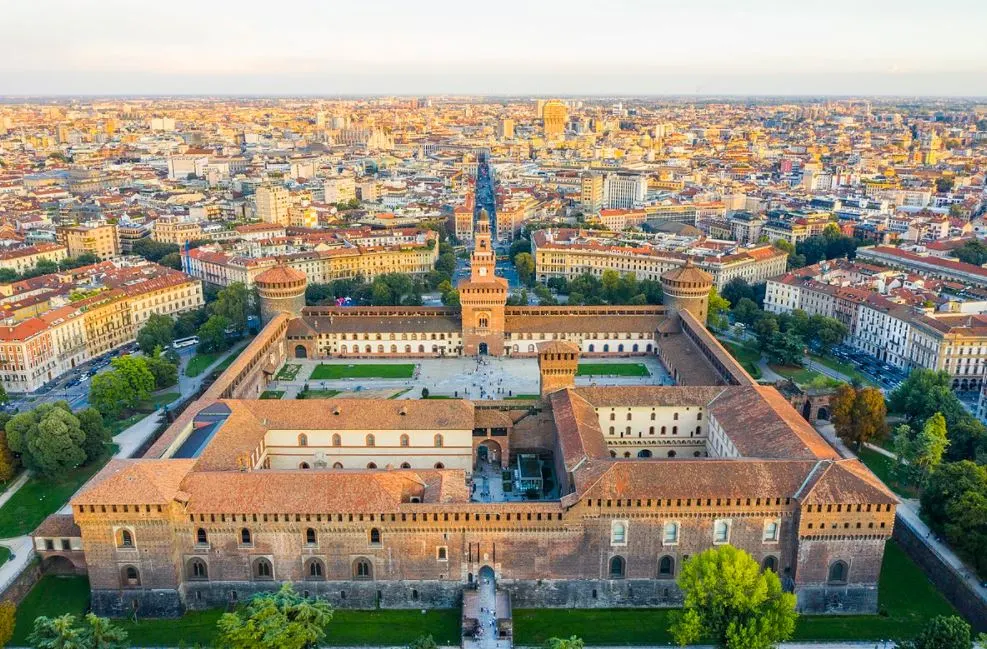
2. There was already an important fort here in Roman times
Milan was an important city in ancient Rome and Roman Emperor Diocletian even made Mediolanum the capital of the Empire in the early 4th century due to its favorable location. The central area of this ancient city featured a Basilica facing a forum on the exact location where we can now find the Duomo and Piazza del Duomo.
The castle was built on the location of an early Roman fortification as well which was referred to as the “Castrum Portae Jovis” which served as the “Castra Pretoria.” This was basically the headquarters of the Praetorian Guard, the elite private army of the Roman Emperor himself.
This fortification was located right on the edge of the city and formed an entrance gate that was part of the Roman wall around Milan.
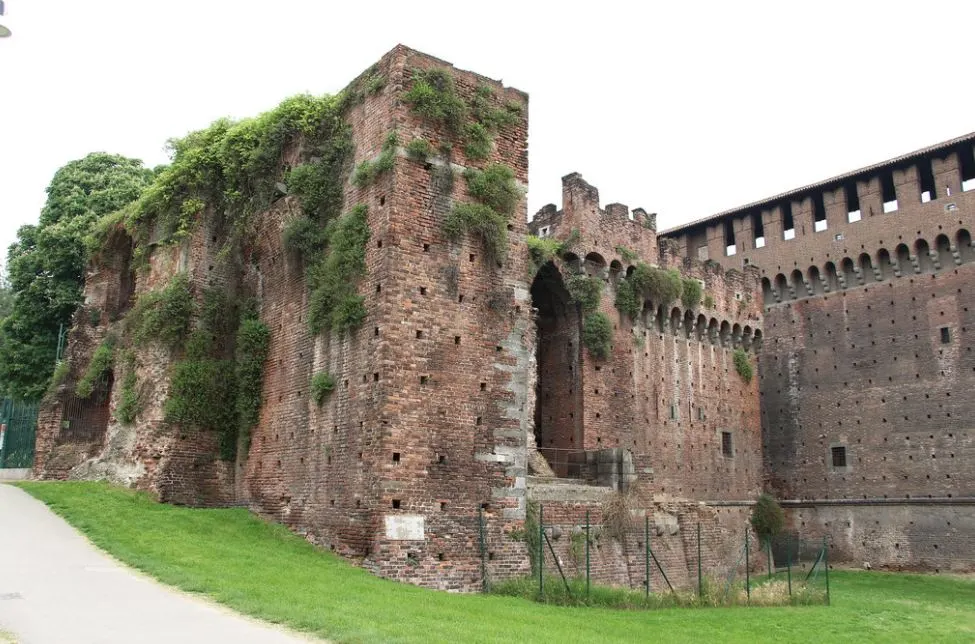
3. The original Visconti Castle dates back to the 14th century
The original castle was built right on top of this ancient Roman fortification and dates back to the 14th century. It was commissioned by Galeazzo II Visconti, a member of the Visconti dynasty who ruled over the city between 1277 and 1447.
This castle was constructed between 1358 and 1370 and was called the “Castello di Porta Giova,” a reference to the city’s gate that was located just nearby.
This original castle was constantly expanded by Galeazzo’s successors until it got about the same size as it has today, which means a square with sides of about 200 meters (656 feet) long.

4. Francesco Sforza rebuilt the castle and added the Torre del Filarete
The Visconti’s were defeated in the year 1447 and the castle was destroyed during the Milanese War of Succession by the Golden Ambrosian Republic. This government was set up in Milan and ruled for a couple of years but was quickly crushed by Francesco Sforza in 1450.
This was the year that the Sforza’s took over as Francesco seized power and became the Duke of Milan. He decided to completely rebuild the castle and turn it into his own lavish residence, which is how the structure eventually got its name.
The new Duke hired the Renaissance sculptor and architect named Antonio di Pietro Averulino (1400-1469), better known by his nickname “Filarete.” His main contribution to the castle was the central tower of the building, now referred to as the “Torre del Filarete” in honor of the man who designed it.
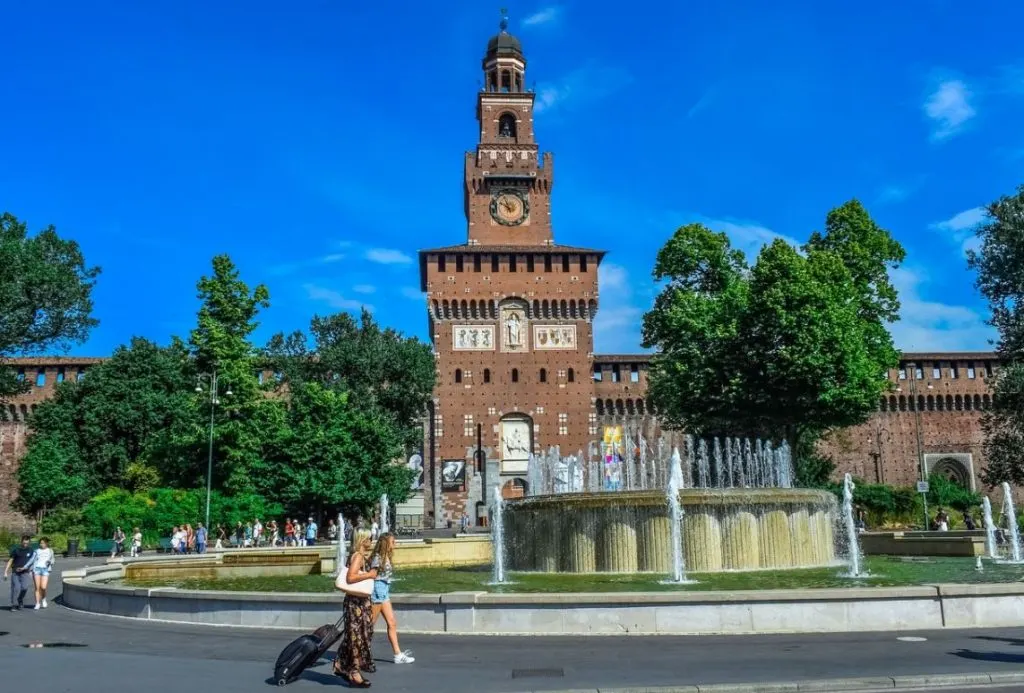
5. It was one of the largest castles in Europe
Upon completion, the castle was one of the largest fortifications in Europe. The structure has a quadrangular design and featured an enormous central courtyard. The north side of the castle was defended by square towers and had a drawbridge to get access to the building.
The tower on the opposite end was referred to as the “Torre Ducale” and protected the area referred to as the “Corte Ducale,” the courtyard in the vicinity of the Duke’s residence.
The castle also had an outer layer of defense in the form of a large ditch that was filled with water, but little traces of this remain today.
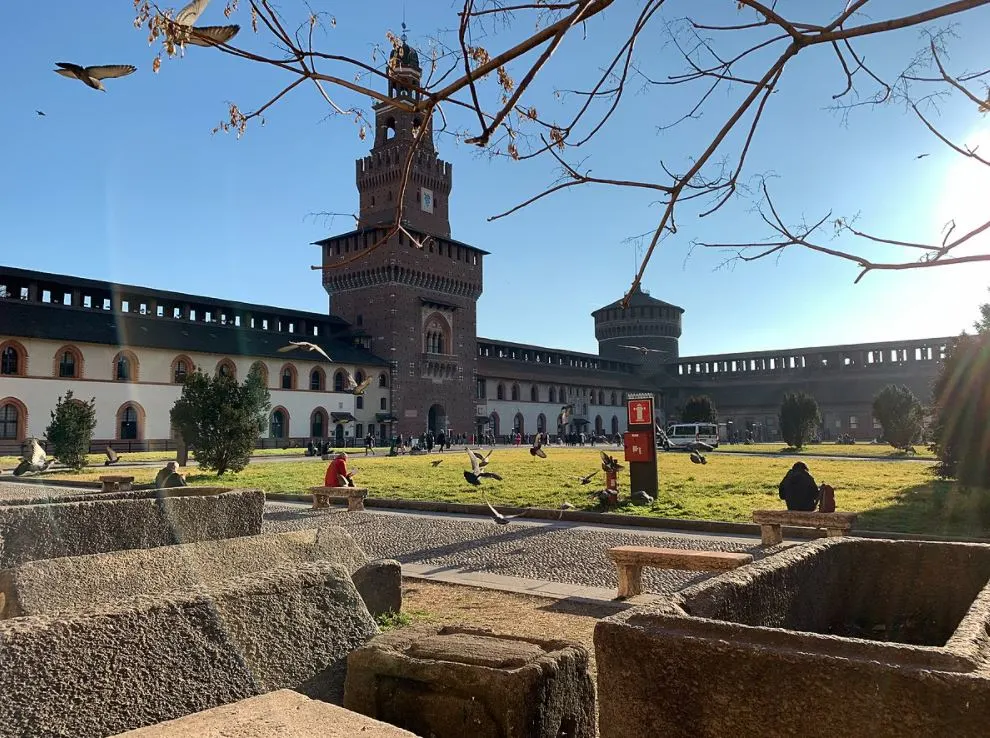
6. Some of the most famous Renaissance artists decorated the interior
Leonardo da Vinci came to Milan in 1482 and would end up staying in the city until 1499. Just 5 years earlier, in 1494, Ludovico “Il Moro” Sforza became the Duke of Milan and the patron of one of the most famous artists in history.
He was a fervent art lover and gave multiple commissions to famous Renaissance artists in the city to decorate the castle’s interior. Leonardo created a fascinating fresco in 1498 on the ceiling of one of the rooms called the “Sala delle Asse.”
The fresco depicts a wide variety of plants, trunks of trees, leaves, and fruits. A renovation project was started in 2012 to restore the fresco to its original state and is still ongoing today.

7. The final member of the Sforza family further expanded the castle
Ludovico Sforza was driven out of Milan by the French army and captured in 1499. The castle was seriously damaged and the central tower even exploded during this time. It was temporarily used to house a bastion and as a weapons depot.
It wasn’t until the year 1521 that the Sforza’s were back in the power of the city as Francesco II Sforza seized power and remained Duke of Milan until he died in 1535.
It’s during this period that the castle was restored and further expanded so it could serve as the Duke’s official residence again.

8. The Spanish turned the castle into a little city
Francesco II Sforza was the final member of the Sforza family to rule Milan and was followed by Spanish rule following the Italian War of 1535. The Spanish had great plans with this enormous castle as they turned it into a citadel, literally a small city.
A garrison was stationed here that was led by a Spanish governor of the citadel referred to as the “Castellan.” Anywhere between 1,000 and 3,000 people lived in the citadel during this period.
During the 1550s, the castle was seriously expanded as it was turned into a star fort that was adapted to gunpowder and more specifically canons. The external fortification had a length of about 3 kilometers (2 miles)and covered an area of 25.9 hectares.
One of the most remarkable Castello Sforzesco facts is that this citadel was the largest in all of Europe during the 16th and 17th centuries!
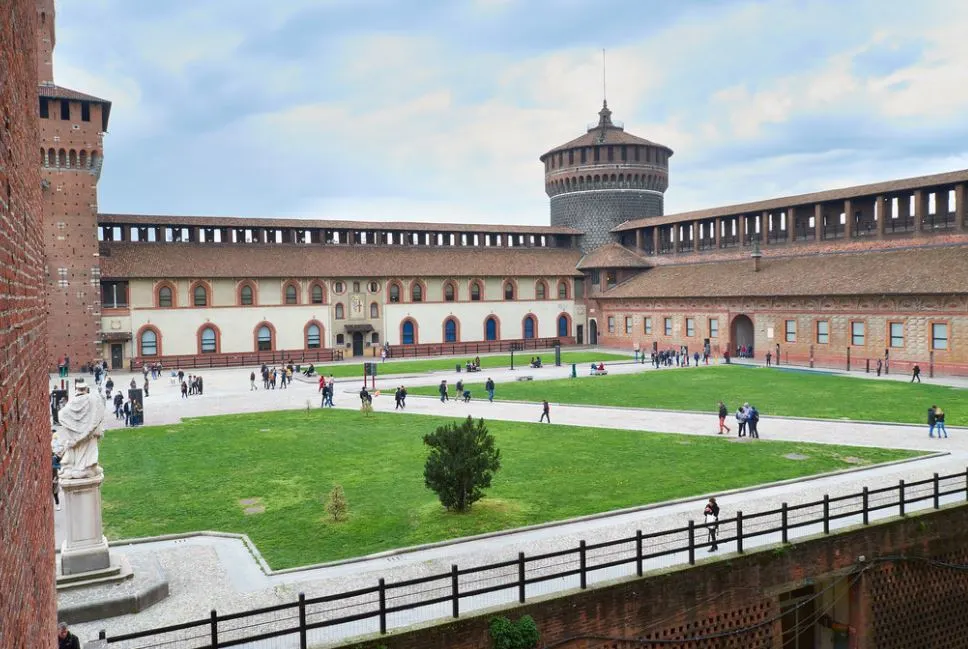
9. The huge citadel was partially destroyed during Napoleon’s rule in Milan
Napoleon briefly ruled Milan between 1797 and 1802, a period referred to as the “Cisalpine Republic.” He destroyed most of the outer fortifications which dated back to the Spanish and Austrian rule in the city.
He also reshaped the side of the city and created the “Foro Buonoparte,” a square adjoined by radial city blocks. The opposite end was turned into a parade ground referred to as the “Piazza d’Armi.”

10. The area was completely transformed in the 19th century
The military use of the castle was seized during the 19th century after the reunification of Italy. One of the most prominent changes during this period was the restoration project that started in the 1880s.
The military parade grounds were turned into the Parco Sempione, a large public park that opened in the year 1888. The other side of the castle also saw great changes as the Via Dante, a pedestrian street was integrated to provide a direct way between the castle and the Duomo.

11. The castle’s main towers aren’t completely original
The destroyed Torre del Filarete was completely rebuilt shortly after the major renovation project was completed. This happened between 1900 and 1905 and the new tower, which was based on the 16th-century plans, was dedicated in honor of King Umberto I of Italy.
The same happened with the castle’s round towers which lost their upper parts during the Austrian rule in the city to make way for their artillery. This means that the round tower’s top parts are modern reconstructions of the original towers.

12. The structure is home to multiple museums in Milan today
Apart from being one of the most famous landmarks in Milan and a popular tourist attraction, the complex also houses a wide variety of the city’s museums.
Some of these include the “Pinacoteca del Castello Sforzesco,” the “Museum of Ancient Art,” and the Prehistoric collections of the “Archaeological Museum” of Milan.
Two of the most famous items housed in the castle are Leonardo da Vinci’s “Codex Trivulzianus,” and the final sculpture ever created by Michelangelo called the “Rondanini Pietà,” a piece he worked on until he passed away at the age of 88.

